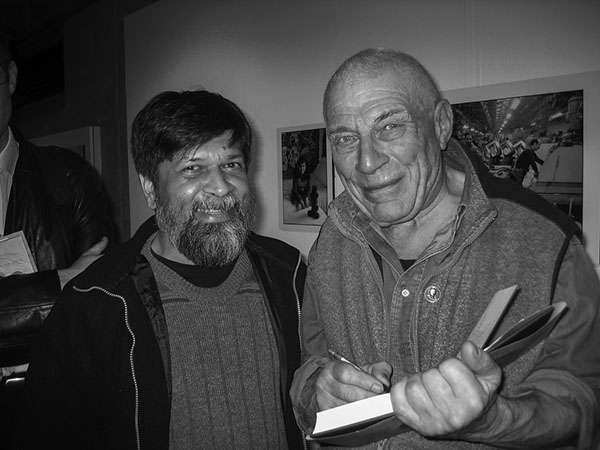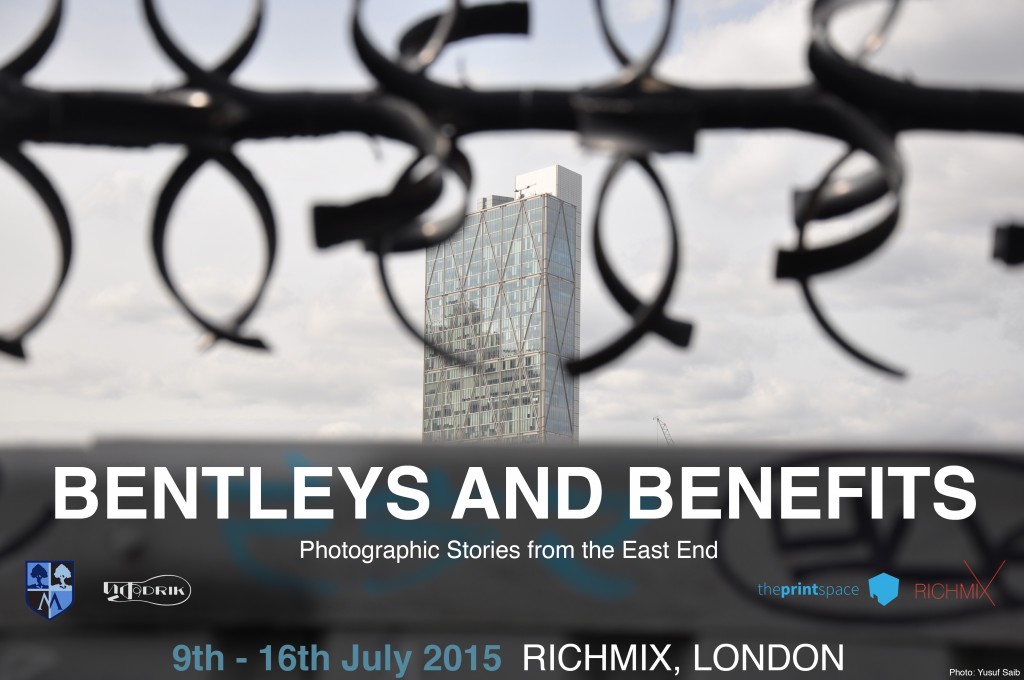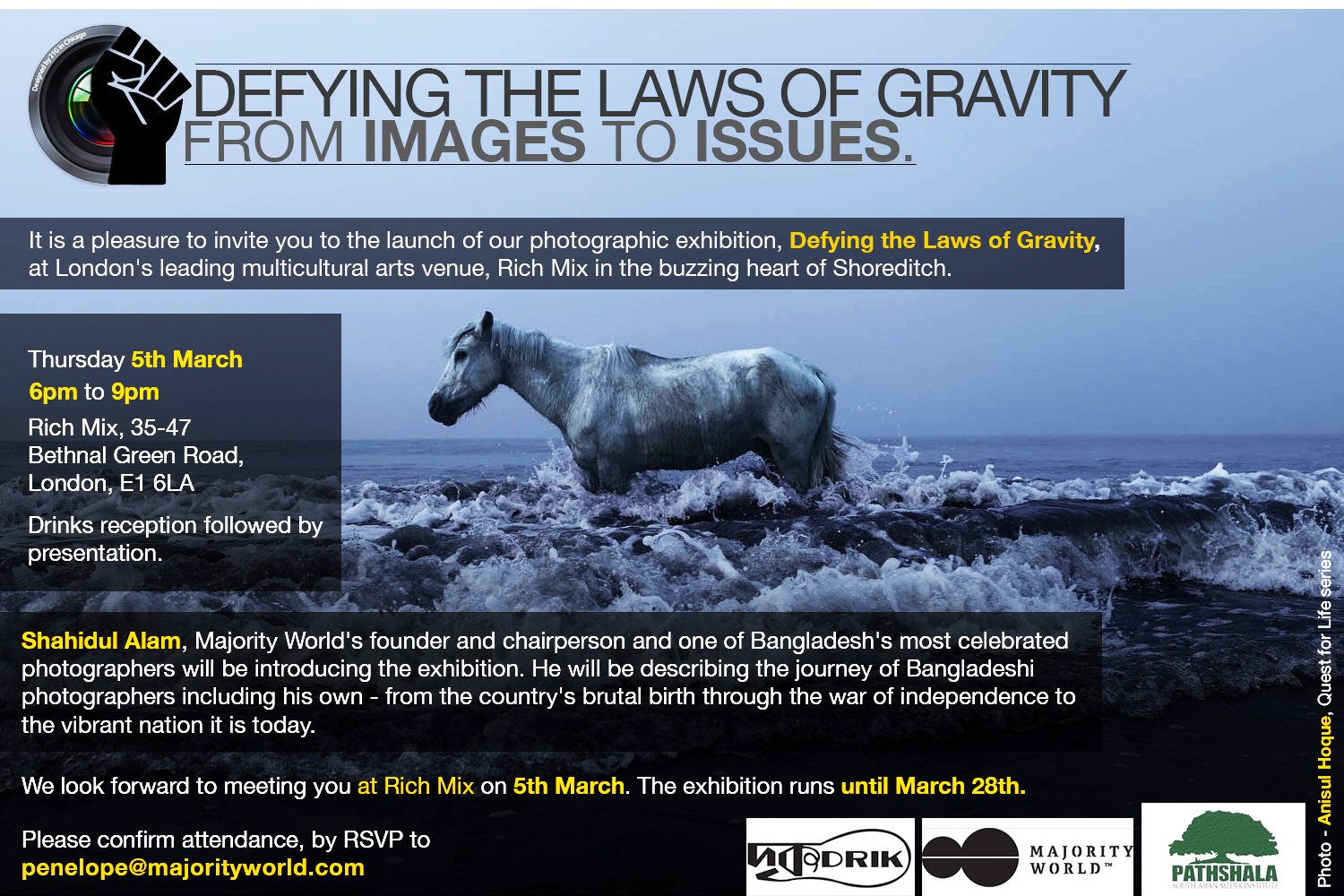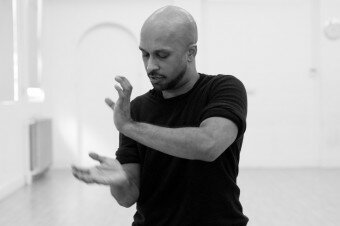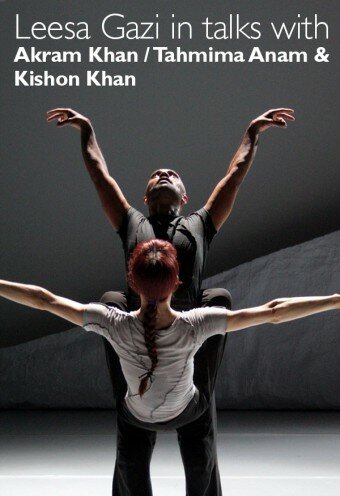Gallery Walk “Insider, Outsider?” from Shahidul Alam on Vimeo.
Featuring images taken by: A. M. Ahad, Bangladesh; Aaron Sosa, Panama/Venezuela;Adolphus Opara, Nigeria; Andr?s Lofiego, Argentina; Andrew Esiebo, Nigeria; Daniel Pati?o Flor, Ecuador; Dominic Sansoni, Sri Lanka; Fabrice Monteiro, Benin; Farzana Hossen, Bangladesh; Kishor Sharma, Nepal; M?rio Macilau, Mozambique; M. Anisul Hoque, Bangladesh; Neo Ntsoma, South Africa; Samar Hazboun, Palestine; Shadi Ghadirian, Iran; Shankar Sarkar, India; Tammy David, Philippines
What makes a photographer different? Camera manufactures would have us believe it is their latest model, perhaps a fancy lens. Others will cite prestigious awards, or acceptance in galleries. A grandmother in a village in Bangladesh, a teenage rapper in South Africa or a tin miner in Bolivia will differ. These accolades will have little meaning to them. Surprisingly, not even the photographer?s nationality, or the colour of her skin, or the language she speaks will greatly affect their judgment, though all of these will matter. It is the relationship she has with them that will determine what they make of her. Are they comfortable in her presence? Does she know how to listen? Does she return? Does she care? Does she make them laugh? They have always found these human traits far more important. The characteristics that have led to intimacy, trust and understanding.
These are the photographers they will confide in, shelter in their homes, and reach out to when they need a friend. It is she they will consider an insider, helping them reach out. This does not reduce the necessity for a professional photographer to have superb technique, absolute reliability, and excellent communication skills. Traits any well-trained photographer will have. The presence of the Internet and the sophistication of modern equipment ensure that with the support of a good agency, any good photographer will send out high quality images with minimum delay. The variables today, are those human traits, the exorbitant costs and delays that plague international travel and local language and knowledge.
It is precisely in these areas that majority world photographers have an edge. Their understanding will ensure that the story is not ?misread?. The trust they have gained will provide that unique access. The fact that they return will lead to those many breaking stories that get left behind when the media moves on. Because they care, the stories will be about people and not about numbers.
This exhibition provides a rare insight into the work of seasoned professionals living and working in their own communities. Fresh imagery sensitively produced provides the visual quality that generic images of mega agencies lack. Local knowledge and the ability to follow up, provides the assurance and credibility that a fast moving media constantly risks missing out on. The show also provokes, asks hard questions, challenges prejudices. In an age where PR substitutes for news, these are refreshing ingredients.
Shahidul Alam
Dhaka, July 2012


